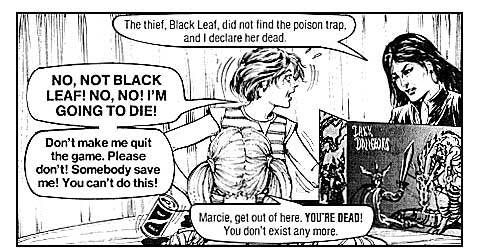Mustrum_Ridcully said:
But Indiana Jones, in all the movies, never gets the equivalent of a rolled 1 that ends his life. Does this imply he is just "lucky", or that the (not actually existing, but let's pretend it does) rules contain enough wiggle room so that there is no single "1" that can lead to certain death?
The dangerous traps in Indiana Jones make us believe that they should be modelled as "save or die" traps in D&D, but the fact Indy never fails any of his saves and checks (and dying from it) could also indicate that they actually are not, and are better modelled by a different, more forgiving mechanic.
Off course, a movie character isn't really following any game rules, but if there were some, they would certainly be giving several options to avoid dying (at least if you're the hero, and we're not talking about some dark tragedy where everybody dies and never achieves his goals)
The question is what does the game aim to model, which story does it tell? Does it model situations in where you survive if you're lucky, and die if not? Or does it model situations in where you will probably survive, unless you make too many or too big errors?
4E leans to the latter. That's exactly what I want. But people that have grown up with (or in?) Tome of Horrors and the previous D&D editions might have different expectations (and prefer them, too.)
FWIW, I grew up with ToH, but don't share the adoration of it. As I've commented about elsewhere, it's the materhorn of dungeon gaming, not the model for all dungeons.
I find people's comments to the tune of "finally! no more deathtrap dungeons" mystifying, considering that the frequency of such dungeons plummeted when the "save or die" poison damage was supplanted with ability damage. It's like people are clapping because we are solving a problem that has already been solved.
Turning my attention back to this...
The dangerous traps in Indiana Jones make us believe that they should be modelled as "save or die" traps in D&D, but the fact Indy never fails any of his saves and checks (and dying from it) could also indicate that they actually are not, and are better modelled by a different, more forgiving mechanic.
I don't know about anyone else in the audience, but I relate to movies in a way different than I relate to games, and I find that most arguments that posit "if this movie ran like a game it would be a bad movie" while fundamentally correct, don't really make the intended case that makes the game in this case bad.
Y'see, the problem for me is that I see a big rock rolling at a person and I thing "that would squish me if it was on me", and necessarily think that Indy could get hurt. In a way, I am relying on the visual medium evoking my personal perception of the situation to tell me that Indy is in imminent danger, which is exciting.
In the game, however... I have a much more present measure of danger. I know what would cause my character to die. Failing a save could, as could a large application of HP damage. When I see a beholder in the game, I know I am in imminent danger, because I know that I will be repeatedly exposed to danger in its presence. Like Indy, I should run (unless I have a real good reason not to.)
So yeah, where am I getting with this? If you want to elicit fear and excitement from me over the fate of, make me believe my character is mortal. That doesn't mean filling a dungeon with bodaks and beholders. But do let me know there are things out there that can kill my character. Occasionally reinforce the point by taking one.

